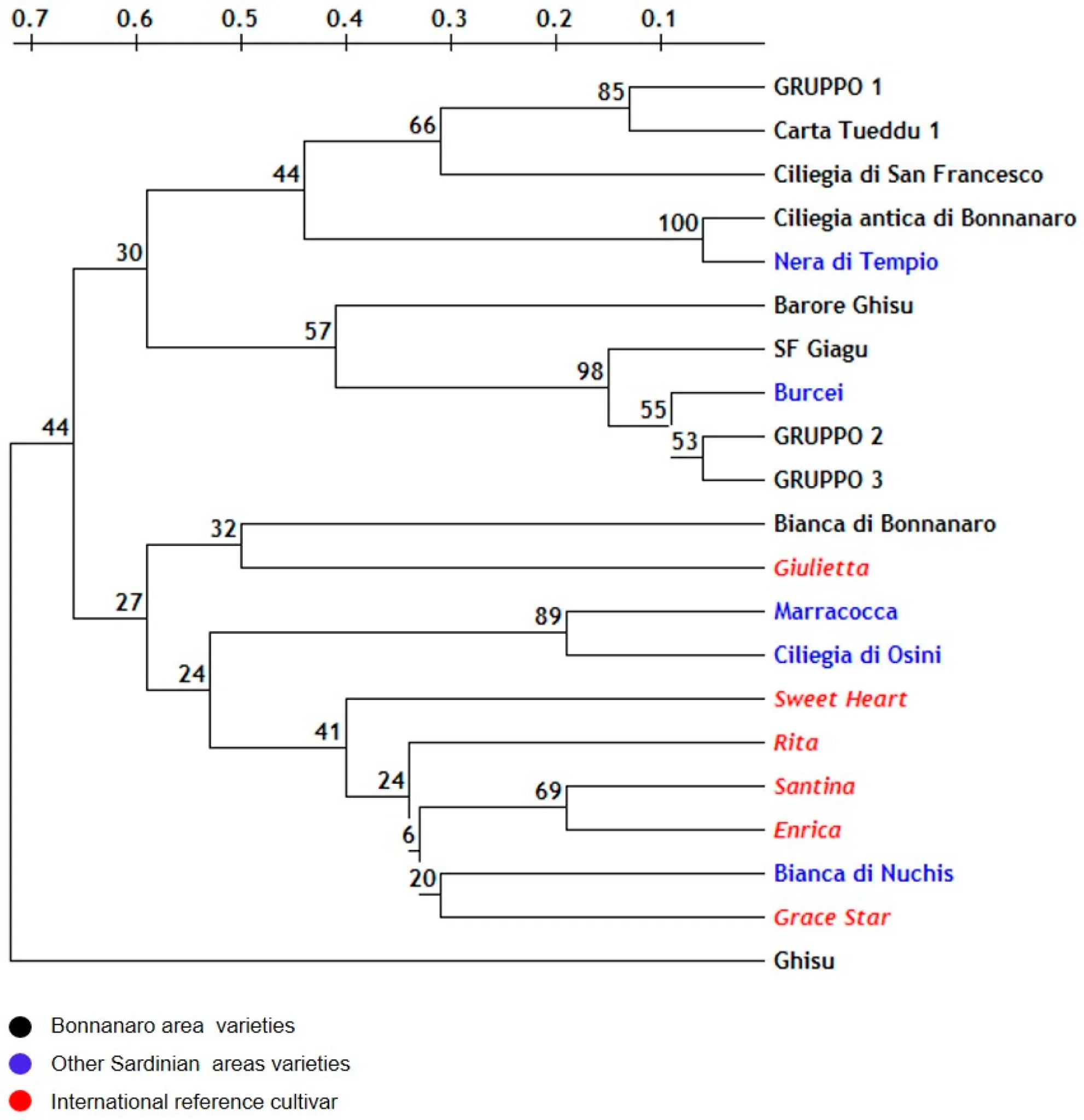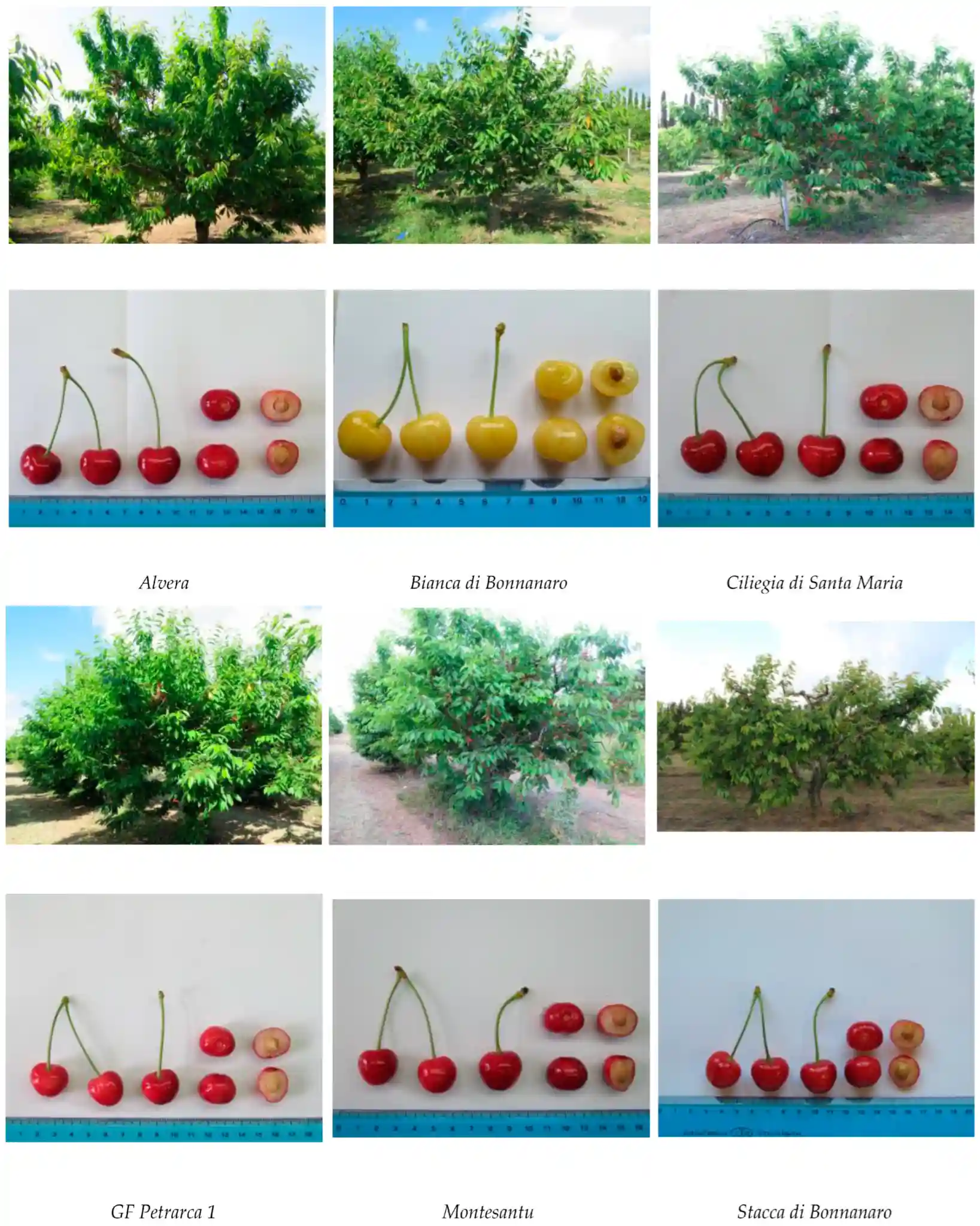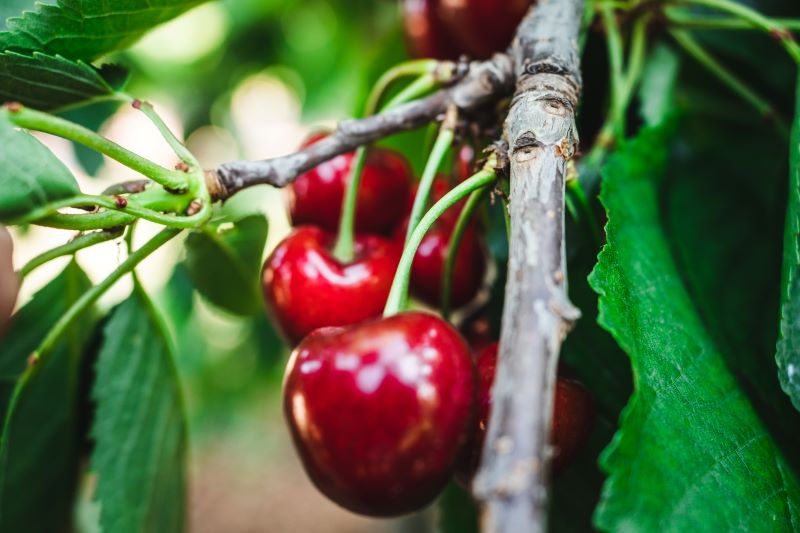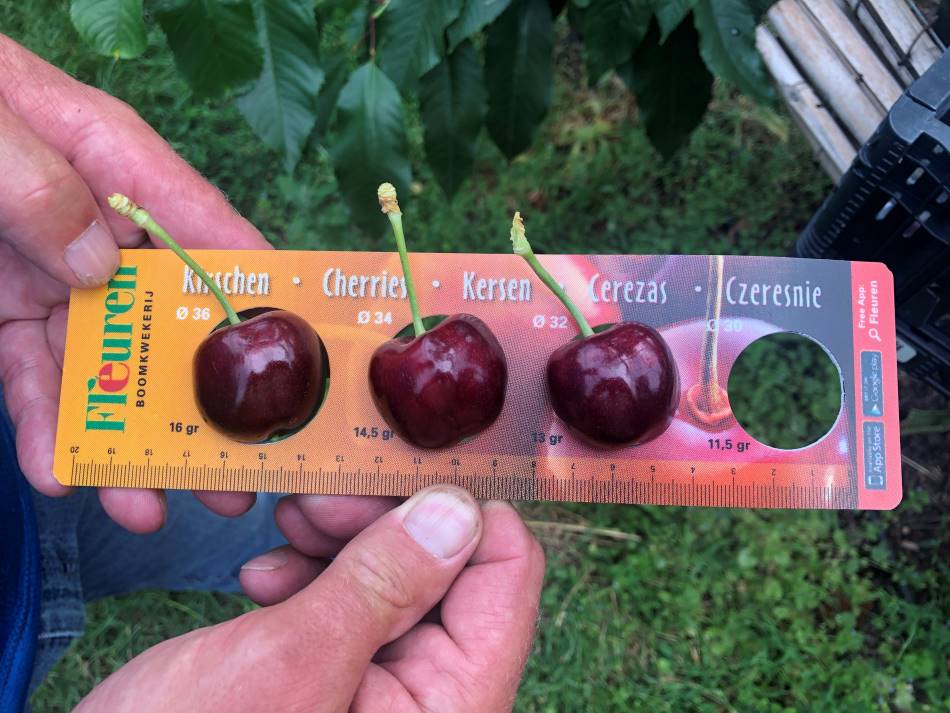The study of plant biodiversity plays a very important role in environmental conservation and the sustainable management of agriculture.
In particular, in Sardinia, the genetic diversity of local cherry varieties represents an agricultural and cultural heritage of great value, which deserves to be preserved and enhanced.
For this reason, a recent study characterized 27 local cherry varieties collected from various areas of the island, analyzing their pomological and genetic traits (using SSR markers).
The main objective of the study was to provide a comprehensive overview of cherry biodiversity in Sardinia, identifying agronomically relevant traits and promoting the dissemination and conservation of these traditional varieties.
Cherry cultivation in Sardinia
The results show that cherry cultivation in Sardinia, although historically marginal compared to other crops, has deep roots in specific areas such as Usini, Bonnanaro, Tempio, Bonacardo, Aritzo, Belvì, Desulo, and Villacidro, where varieties with unique characteristics have been identified.
 Figure 1. Tree canopy aspect and fruit characteristics of some Sardinian cherry varieties.
Figure 1. Tree canopy aspect and fruit characteristics of some Sardinian cherry varieties.
Among these, some stand out for their early ripening, such as “Usinesa” and “Maggiolina”, while others for particular traits, such as the yellow skin and pulp coloration of “Bianca di Aritzo” and “Bianca di Nuchis”.
Molecular characterization revealed a notable genetic variability among local varieties, with some of them, such as “Ghisu”, exhibiting unique genetic profiles, indicating a possibly independent origin compared to other cultivars.
On the other hand, the genetic similarity between some Sardinian varieties and widely distributed national cultivars suggests the possible existence of genetic exchanges throughout the island’s agricultural history.
Agronomic traits and fruit quality
From an agronomic perspective, the productivity of Sardinian varieties was quite variable; however, “Stacca di Bonnanaro”, “Ciliegia di Santa Maria”, and “GF Petrarca 1” showed high yields.
Fruit quality parameters, such as total soluble solids content and titratable acidity, revealed significant differences among cultivars.
 Figure 2. Cluster analysis dendrogram of the genetic distance among varieties based on the 8-SSR markers
Figure 2. Cluster analysis dendrogram of the genetic distance among varieties based on the 8-SSR markers
Sensory analyses revealed superior characteristics in some varieties, with “Stacca di Bonnanaro” and “Bianca di Nuchis” rated as excellent by tasting panels, thanks to their balance between sweetness and acidity and their flesh texture.
Adaptation and future prospects
Other varieties, although less appreciated for their texture or less intense flavor, displayed specific features that could make them suitable for particular purposes, such as industrial processing or cultivation in areas with harsh climatic conditions.
The study highlights how climate change and the need for innovative farming techniques represent major challenges for cherry cultivation in Sardinia.
Identifying and enhancing local varieties can provide an excellent solution, allowing the selection of cultivars with greater tolerance to water and heat stress, by leveraging the traits of native varieties developed in the Sardinian environment.
Moreover, the adoption of targeted agronomic practices and the conservation of genetic diversity could support the reintroduction and success of cherry cultivation on the island, helping reduce rural abandonment and promoting a more resilient agriculture.
Heritage and local economy
Preserving the genetic heritage of cherry trees in Sardinia means not only safeguarding an agricultural resource but also keeping alive a cultural tradition deeply rooted in the island’s history.
For these reasons, protecting Sardinian biodiversity is essential to maintaining a broad genetic pool that could be used in future breeding programs, as well as ensuring the conservation of the territory and its traditions.
Additionally, thanks to their unique features, Sardinian cherries could become a symbol of agro-food excellence, contributing to the development of a local economy based on quality and authenticity.
Source: De Pau, L.; Fernandes de Oliveira, A.; Frau, A.F.; Rigoldi, M.P.; Di Salvo, R.; Scanu, G.; Satta, D. Biodiversity of Sweet Cherry in Sardinia. Diversity 2024, 16, 767. https://doi.org/10.3390/d16120767
Image Source: De Pau et al., 2024; Cuore della Sardegna
Andrea Giovannini
University of Bologna (ITA)
Cherry Times - All rights reserved














